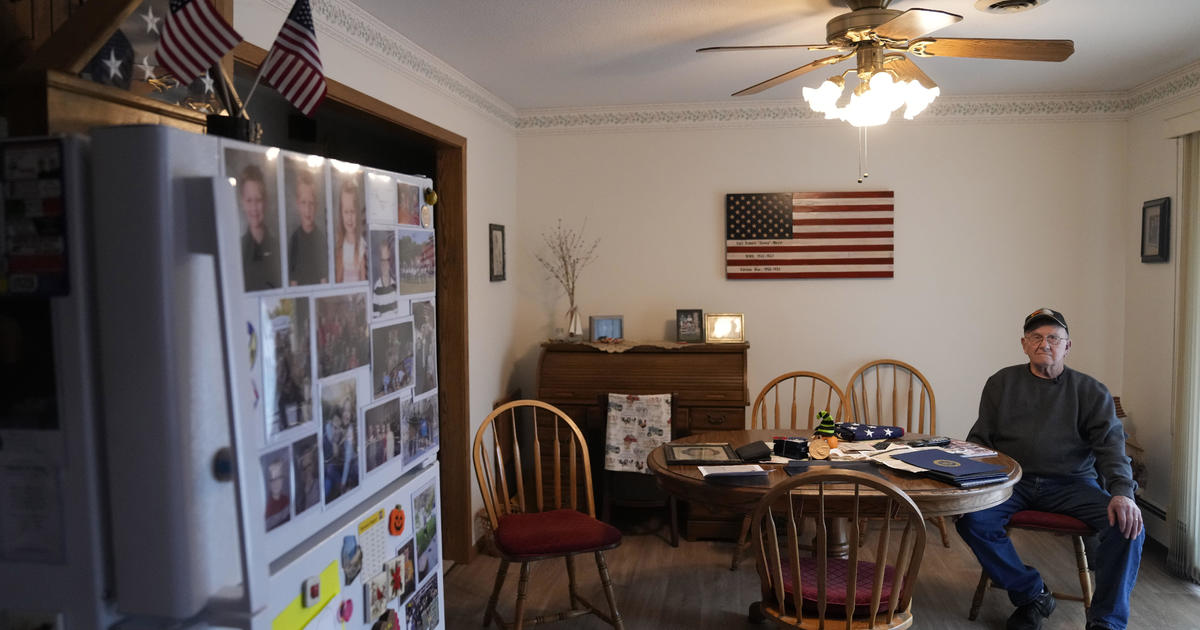Minn. Emergency Rooms See Makeover Over The Years
ST. PAUL, Minn. (AP) -- As a new generation of emergency rooms opens across the east metro, patients are finding amenities that might remind them more of hotels than hospitals.
Emergency patients at St. Joseph's Hospital in St. Paul, for example, can now sip sodas while watching cable television in private exam rooms.
At nearby United Hospital, there's a fireplace in the lobby, art on the walls and a commitment to publish waiting times on a website -- sort of the equivalent to illuminating a "vacancy" sign.
Stackable wheelchairs at the Regions Hospital emergency room are parked at the front door like bellhop carts, and there are plans for a computer with Internet access in the lobby.
All three hospitals near downtown St. Paul have built new or have expanded emergency rooms since 2009. The newest of the bunch opened recently at United. Beyond the amenities, the ERs -- which came with a combined price tag of at least $44 million -- are designed to be both quieter and quicker.
"We're trying to create a calm and quiet environment for patients, so we can take the urgency out of their emergency," said Helen Strike, the chief nursing officer at St. Joseph's Hospital, which expanded its emergency room in 2010.
"It's definitely nicer than it was," said Dr. Nathan Anderson, medical director for the emergency department at United Hospital. "This is the front door to health care for many in our community."
Spiffy new ERs aren't limited just to urban hospitals.
In 2007, Regina Medical Center in Hastings authorized $920,600 for an emergency room expansion, according to state records. In 2009, Lakeview Hospital in Stillwater authorized $3.5 million for its ER.
Lakeview unveiled its expanded emergency room in April, which grew from seven to 12 treatment rooms. All rooms in the ER now are private and there's an enclosed garage for ambulances bringing patients, said Dr. Tom Monahan, medical director for the Lakeview emergency department.
Hospital officials don't exactly volunteer the hotel analogy when highlighting the amenities in the new facilities, instead using terms such as "patient-centered." But economists suggest that medical centers would be wise to take a page out of the Radisson playbook.
"Amenities such as good food, attentive staff and pleasant surroundings may play an important role in hospital demand," wrote two researchers in a paper published by the National Bureau of Economics in 2008. The article was titled "Hospitals As Hotels: The Role of Patient Amenities in Hospital Demand."
Total visits to emergency rooms at the nine adult hospitals in Dakota, Ramsey and Washington counties grew by 10 percent from 2005 to 2009, according to the Minnesota Health Department.
But the outlook for continued growth at emergency rooms is somewhat uncertain, especially since health plans and hospitals are working to cut the number of ER visits by patients with minor problems that could be treated elsewhere. Plus, the overall growth picture doesn't look so robust in some places after factoring numbers for fiscal 2010.
Visits to the emergency room at United Hospital, for example, were down from 2009 to 2010. Even so, the hospital says it needed a bigger emergency room because the old facility was stretched too thin.
The new ER at United has 27 beds, compared with 18 in the old unit. There are high-tech supply cabinets, a dedicated CT scanner, a new decontamination area and facilities for bigger patients. Where the old emergency department had just two ceiling-mounted lifts to help move patients heavier than 600 pounds, the new unit has 13.
"The patient demographics are shifting in that direction," said Anderson, the medical director.
At St. Joseph's Hospital, the new ER fully opened in August featuring 20 beds and six rooms with equipment for resuscitating patients. The old facility had 14 beds and one resuscitation room.
Patients at St. Joseph's now have access to drinks from a fountain machine with Pepsi products. Hand-held devices for calling nurses to the bedside also can be used to change TV channels. And the ER is designed in ways to keep patient areas quiet.
"We want patients entering into a place that's in control, that feels calm and where they can start their healing," said Strike, the chief nursing officer.
Two ways the St. Joseph's ER is quieter: All the rooms are private and separated by walls rather than curtains.
Among the three emergency rooms closest to downtown St. Paul, the ER at Regions Hospital is now the oldest, having been renovated and expanded in 2009. The hospital may already have seen a benefit from being first out of the gate with the TVs, artwork and private rooms.
"Our volumes have increased more than 8 percent since we did this," said Richelle Jader, who is director of the emergency department.
Hospitals likely have seen an increase in emergency room visits because people who lack health insurance often fall back on emergency rooms for their care, said Lawrence Massa, president of the Minnesota Hospital Association. Employer-sponsored coverage has diminished with job losses and the movement to higher-deductible health plans.
Emergency room visits likely will continue to increase, Massa said, with the aging of the population.
Hospitals that are expanding ER facilities today are looking to accommodate growth, Massa said, while meeting demands for more secure rooms for mental health patients as well as "negative pressure" rooms that prevent patients from spreading infectious diseases.
"This is a reflection of hospitals retooling to better meet the needs of their patients," he said.
It also reflects the rise in health care costs. The Minnesota Council for Health Plans, which is the trade group for insurers in the state, notes that spending on ER care for Minnesotans in employer-sponsored and individual health plans grew over the last five years by 45 percent.
But insurers aren't sounding alarms about the new crop of emergency rooms.
"They are expensive to operate, and we'd like to do our best to make sure our members are using them for appropriate care issues," said Greg Bury, a spokesman for Minnetonka-based Medica. "But we think emergency departments are necessary access points for emergency issues, so we're supportive of appropriate development."
By CHRISTOPHER SNOWBECK
St. Paul Pioneer Press
(© Copyright 2011 The Associated Press. All Rights Reserved. This material may not be published, broadcast, rewritten or redistributed.)



